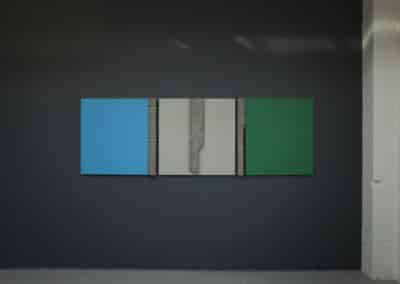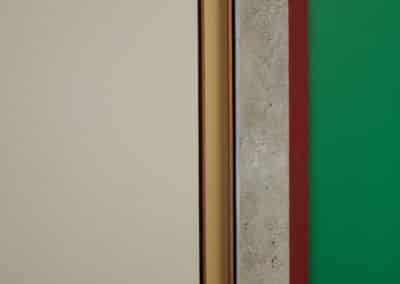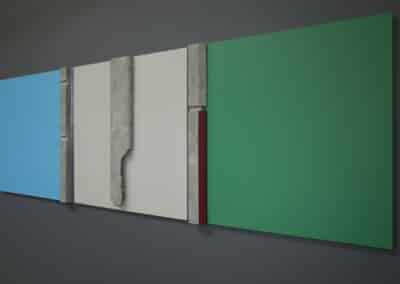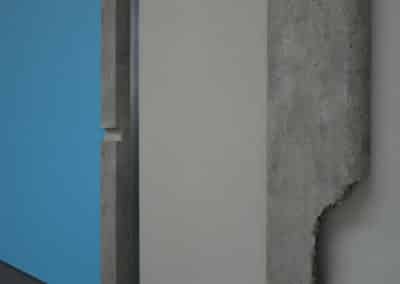Acrylic on aluminium
Dimensions: 258 x 84 x 4 cm
Charlie Warde, 2017

Photograph by Mark Whittred
3D “Plastic Painting” of parts of the East Block of Robin Hood Gardens arranged onto 3 panels of solid landscape colours. Each component of the building is recreated to scale using only artist pigments and acrylic mediums.
The composition is based on Ruben’s Decent From the Cross (Hermitage Museum); the scale conforms to Modernism’s preoccupation with the human scale – each panel measuring 2 foot 9 inches square, the distance between elbows of Vitruvian Man standing with his hands on his hips.
After years of campaigning for its survival by leading architects and academics, Robin Hood Gardens, designed by Peter and Alison Smithson, has been controversially decanted and demolished. The V&A Museum has obtained a 2 storey section of the concrete exterior which was shown at the Venice Architecture Biennale in 2018. It will be permanently housed in it’s new Stratford museum.
“The triptych Deposition (Robin Hood Gardens) takes cross sections of three elements of the building and arranges them on backgrounds of landscape colours to form a loose resemblance to Rubens’ Descent from the Cross (c. 1617-18). That explains the title, and plays in both a wider art tradition and the most historically resonant case of mourning the fallen…
Perhaps we can take [Warde’s painting] as a proposal that we should look to the past to inform the future. Warde depicts and mourns the decline of the physical integrity of the social housing schemes conceived fifty years ago, while retaining enough of their innovative aesthetic to celebrate what they were. That physical decline stands in for and also mourns the parallel loss of empathy represented by recent housing policy. We need to move forward by moving back: in physical terms through reparation, not redevelopment; in moral terms by replacing the narrow financial and parochial perspectives of the new century with an approach more akin to the ideals of the sixties.”
Paul Carey-Kent, art critic & curator




